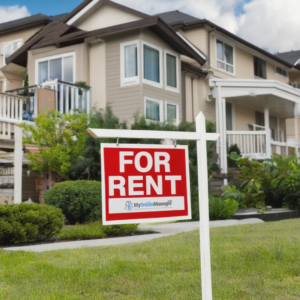The COVID-19 pandemic has left a lasting impact on housing markets across the United States. While some cities experienced an economic downturn, others saw a surge in demand, leading to soaring rental prices. These “pandemic boomtowns,” which became hotspots for migration and development, are now facing a growing crisis: a dramatic spike in evictions.
A recent report highlights that eviction rates in these fast-growing cities have surged by 35%, largely due to rising rents and the expiration of rental assistance programs. With an increasing number of tenants unable to keep up with escalating costs, eviction filings have soared, pushing many households into precarious living situations.
The Eviction Crisis: A Snapshot of the Hardest-Hit Cities
One of the cities most affected by this crisis is Phoenix, Arizona, which has become one of the leading eviction capitals in the country. In January alone, Phoenix recorded over 8,000 eviction filings, reflecting a stark reality for thousands of tenants who can no longer afford to stay in their homes. Many of these renters are middle-income earners, seniors on fixed incomes, and young professionals who relocated to the city during the pandemic for job opportunities and lower living costs.
Beyond Phoenix, other cities in the Sunbelt region—such as Austin, Texas—are also grappling with the fallout from rising housing costs. Interestingly, while cities like Austin have seen an oversupply of luxury apartments, many of these units remain vacant due to their high price tags. Meanwhile, lower and middle-income renters are struggling to find affordable options. The vacancy rate for high-end apartments in Austin has reached 15%, further highlighting the imbalance between supply and demand.
Why Are Evictions on the Rise?
The surge in evictions can be attributed to several interrelated factors:
1. The End of Pandemic Rent Assistance
During the pandemic, rental assistance programs and eviction moratoriums provided relief for struggling tenants. However, with these programs now expired, many renters are unable to catch up on accumulated debt, leading to an influx of eviction cases.
2. Rapidly Rising Rents
High demand and limited housing supply have led to skyrocketing rents. In many cities, rents have increased by 20% or more since 2020, making it difficult for tenants to keep up, especially as wages have not risen at the same rate.
3. Lack of Affordable Housing Development
While many developers have focused on building luxury apartments, the construction of affordable and mid-range housing has lagged behind. This has created a situation where even though high-end units remain empty, lower-income renters have limited options.
4. Weak Tenant Protections
State-level tenant protection laws vary significantly across the country. In cities like Phoenix and Austin, landlords have more power to initiate evictions compared to states with stronger renter protections, such as California or New York. This disparity has contributed to the increasing number of eviction filings.
The Human Cost of Evictions
For many families, an eviction is more than just losing a home—it can be a life-altering event with long-term consequences:
- Financial Hardship: Many evicted tenants struggle to find new housing, often facing higher upfront costs such as security deposits and first-month rent.
- Displacement and Homelessness: In some cases, those evicted are forced into temporary shelters or even homelessness, further straining city resources.
- Emotional and Mental Stress: The stress of eviction can lead to anxiety, depression, and other mental health challenges, particularly for families with children.
Potential Solutions: What Can Be Done?
The growing eviction crisis demands proactive solutions from both policymakers and the private sector. Some possible steps include:
1. Strengthening Tenant Protections
Cities and states can implement stronger tenant rights laws, such as longer eviction notice periods, caps on rent increases, and protections against unfair evictions.
2. Expanding Affordable Housing Development
Encouraging the construction of affordable housing through tax incentives, zoning changes, and subsidies can help balance the market and provide renters with more options.
3. Reviving Rental Assistance Programs
Local and federal governments should explore new rental assistance programs that provide short-term relief for tenants facing financial hardship. This could prevent evictions and reduce the burden on the housing system.
4. Creating Rent Control Measures in High-Impact Areas
Cities experiencing extreme rent hikes could consider rent control policies, which limit how much landlords can increase rent per year. While controversial, such policies can help stabilize housing costs for vulnerable populations.
Final Thoughts
The eviction crisis in pandemic boomtowns is a stark reminder of the fragility of the housing market in times of rapid change. Without urgent action, many renters will continue to face displacement, financial hardship, and uncertainty about their future. Addressing this crisis requires collaboration between policymakers, landlords, and community organizations to create a more stable and equitable housing market.
As rents continue to rise and evictions increase, cities must prioritize housing affordability and tenant protections to prevent further instability. Without meaningful intervention, the housing crisis will only deepen, leaving countless families without a place to call home.
Source:
High rents cause evictions to spike by 35% in pandemic boom towns

